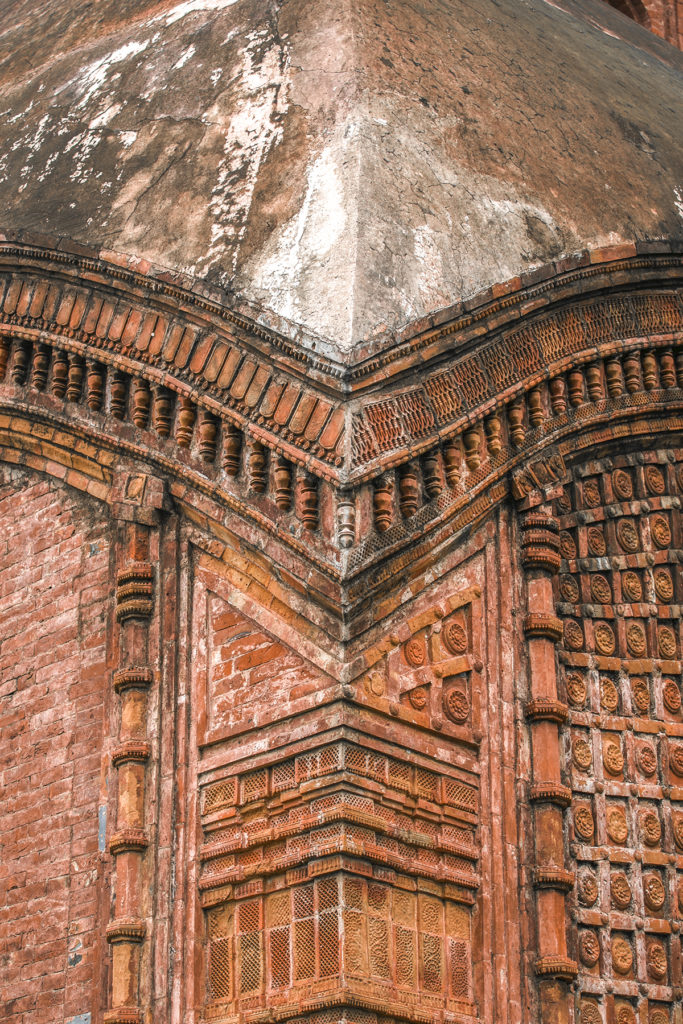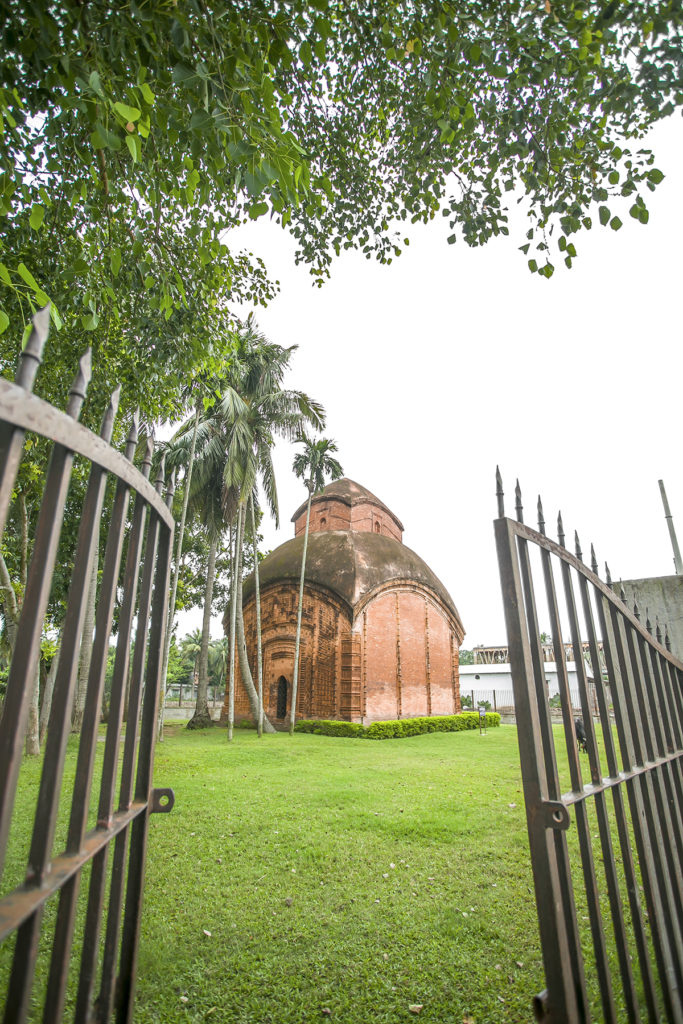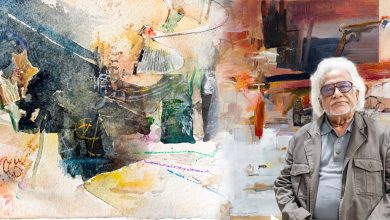
Everything changes with time and architecture are no exception. As humans keep earning and honing their knowledge, the materials and styles of architecture went through periods of change. But some structures transcend the trial of time and continue to mesmerise us hundreds of years after it’s construction. Jessore’s Chanchra Shiv Mandir is a perfect example of this.
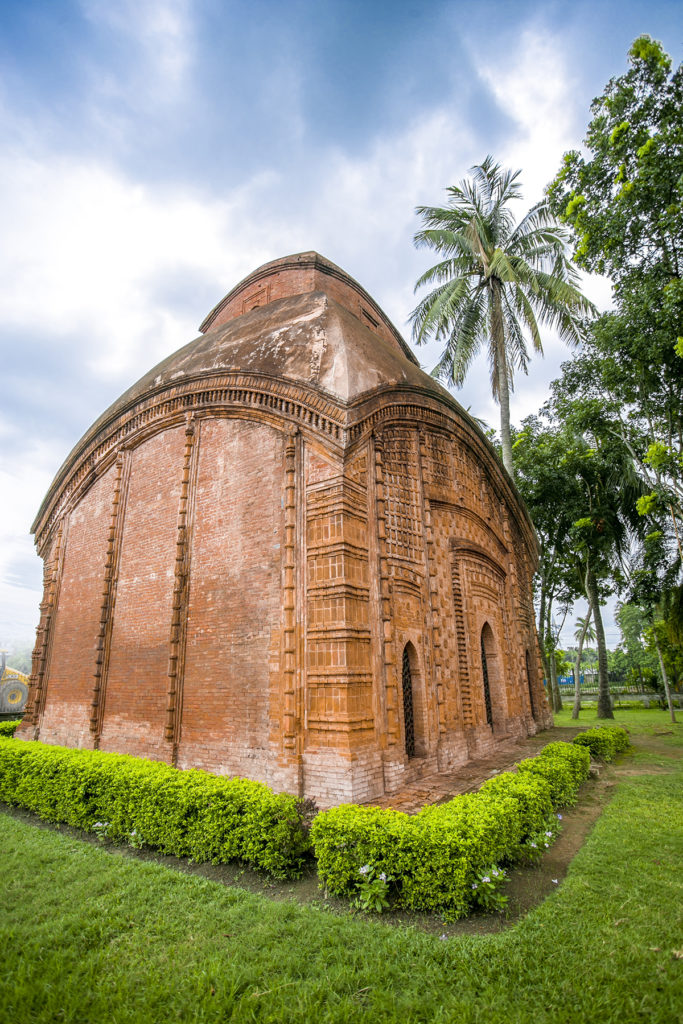
As the name suggests, it is a temple dedicated to the Hindu god Shiva. At first glance, its vaulted roof and earthy brown walls bring to mind a typical rural hut with a thatched roof. It’s not a large building, about 9.5 metres long and 8.13 metres wide.
The Bengal style temple consists of a two-tier vaulted roof. The “at-chala” design (as in the roof has eight planes to it) is a style of construction where atop the vaulted roof of the main square building, a smaller second story is built, also with a vaulted roof. Inside the temple, two sturdy pillars help to hold up the upper story, which has skylight-like openings to allow light to spill inside.
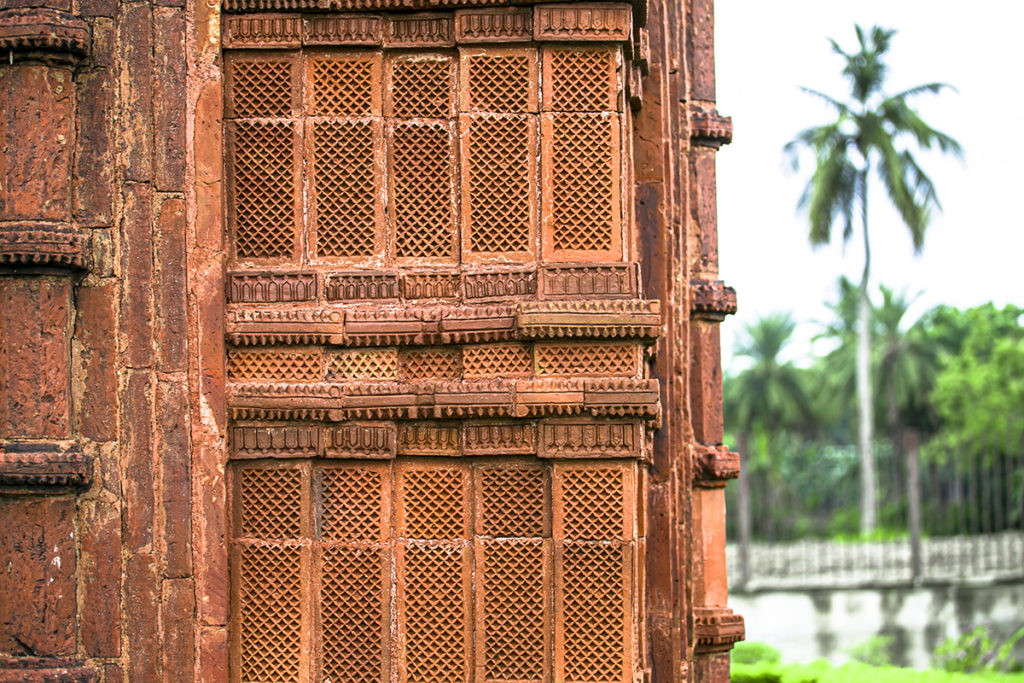
The “at-chala” design became quite popular in Bengal in the 18th and 19th century in the construction of temples. Chanchra Shiv Mandir follows the stereotypical features of this style.
Up-close, the old temple reveals its beauty in layers. First, there is the entryway, three arched openings in total. Another opening is situated on the left wall. It’s not known what kind of gate these entryways once boasted, but now they’re closed using metal grills.
Its brick and lime walls are lined with intricate terracotta panels. The front wall contains the most ornamentation. Even inside, the use of terracotta is noticeable.
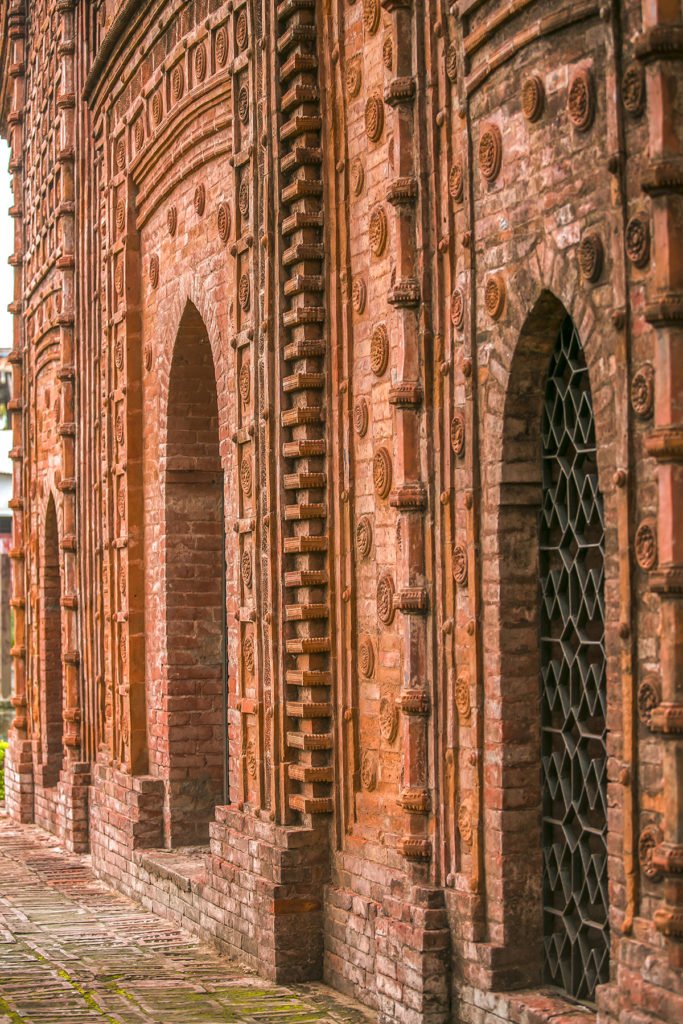
The terracotta panels are not vintage, sadly. Even though the temple is 321 years old, the terracotta was only placed on the walls 11 years ago, during a renovation of the historic site. In 2008, the temple was renovated following the Unesco archaeological code. The walls underneath the terracotta panels were reinforced with concrete.
During the new moon and full moon nights, the temple becomes host to religious rituals. People come from far away to attend. It is surmised from inspecting the inscriptions on the temple walls that it was built around 1696 by a landlord or ‘Zamindar’ named Shri Monohor Roy (1689-1705). He was one of the few landlords of that time who were allowed to rule with the title of ‘King’.
It is said that the landlord had the temple built to celebrate his coronation. Once his palace was beside the temple, though it vanished with time. Traces of any such palace is yet to be found.
There is still a lotus pond beside the temple, which used to cover a much larger area in the past. It was used for ablution before worshipping the god Shiva at the temple. The god’s idol is no longer present inside.
The peaceful 17th-century temple stands surrounded by a scenic rural landscape and visible from the Jessore-Benapole road, just 3km from Jessore towards Khulna and at the Chanchra village. From Jessore’s Monihar bus stand, it’s only about 15 minutes away by rickshaw.




